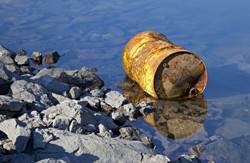Microbes clean up chlorinated solvents synergistically
The EU-funded ANDEMIC project was established to investigate the bio-geochemical interactions that affect chlorinated solvent bioremediation in sub-surface anaerobic environments. The aim was to improve the ability to sustain high rates of microbial activity and make bioremediation more reliable and easier to predict. Bioaugmentation, the addition of active microbial cultures to contaminated sites, offers an effective low-cost solution for the remediation for chlorinated solvents. It involves groups of highly specialised microorganisms working together in the absence of oxygen to transform chlorinated solvents into non-toxic substances such as ethene. Scientists employed a stable microbial consortium (KB-1) used commercially for bioaugmentation as a model for laboratory-based and field experiments. A field demonstration was conducted in fractured bedrock to better understand biological and non-biological interactions that influence microbial activity in the sub-surface. The bioremediation of chlorinated compounds in fractured bedrock posed a significant challenge due to unpredictable groundwater flow patterns in fractured rock. Therefore, researchers used a combined approach including a conservative tracer test to understand the connections between wells, monitoring of contaminant concentrations and their stable isotope ratios as well as determination of other physical and chemical groundwater properties. Researchers also monitored dechlorinating and non-dechlorinating microorganisms to understand the relationship between groundwater chemical properties and microbial activity. This helped to explain the reasons for treatment failure or success at specific locations. Monitoring in the field can be improved through the use of biomarkers. Therefore, ANDEMIC developed molecular probes for distinguishing the bacteria Dehalococcoides from KB-1 used for bioaugmentation and Dehalococcoides native to the contaminated site. This allowed researchers to determine whether the introduced microorganisms are responsible for the bioremediation or whether the microorganisms intrinsic to the site are doing the job. The knowledge gained from ANDEMIC will help to design better strategies for the bioremediation of chlorinated solvents in contaminated aquifers. It will also provide a sound basis for future research into new groups of microorganisms capable of degrading other pollutants entering the soil and ground environment.



